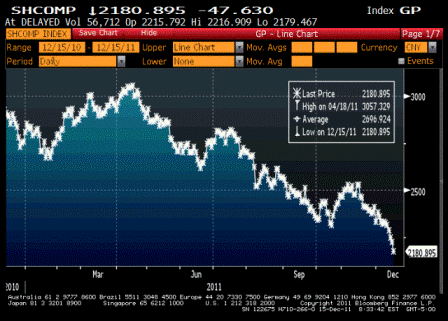Best I can tell the jury is still out as to whether China is going through
the ‘hard landing’ scenario that began when modest first half state lending was
followed by lower second half state lending, all to control inflation.
Note the recent social unrest that could be inflation linked.
All we know is the regime change risk was sufficient for them to cut back on growth.
And so far not much sign of anything of consequence in the pro growth direction,
which means the political concerns over inflation are still there.
The currency could also be heading south fundamentally due to inflation.
Net fx reserves may be down to minimum levels
after factoring in their dollar debt that has been indirectly supporting the yuan.
And with foreign direct investment tapering off,
that source of currency support seems to have subsided.
While slower growth in China hurts some US companies,
lower resource costs for the US are consumer friendly.
If gold has lost enough of it’s bid from central bankers,
it could be headed back to it’s marginal cost of production, 1980’s style,
which is where it goes without global central bank accumulation.
I recall the buyers earlier this year included the Greek and Mexican central banks,
as well as the central bank of Bangladesh.
I suppose with high unemployment,
govt figures it might as well put people to work in the gold mines? Whatever!
Anyway, the final leg up for this cycle may have been the spike after Chavez
opted to take delivery of his gold, which he now has,
debunking the speculation that it wasn’t there to be delivered.
Next is whether Congress lets the FICA cuts expire and take maybe 1% off of Q1 GDP.
The President just said he wouldn’t veto the Republican plan, so they may work something out.
But with their bent on ‘paying for it’ no telling what the final result will be.
China headlines:
China’s Manufacturing May Contract a Second Month
Foreign Direct Investment in China Falls as Factories Slow
China Money Rate Rises Most in 2 Weeks
Yuan Forwards Fall for an Eighth Day as Manufacturing May Shrink
Chinese Cut Back on London Luxury Homes as Stock Losses Bite
China Money Supply Growth Slows to Weakest Pace in Decade
China Affirms Property Curbs Amid ‘Grim’ Outlook
China’s Stocks Fall to Lowest in 33 Months on Economic Concerns

